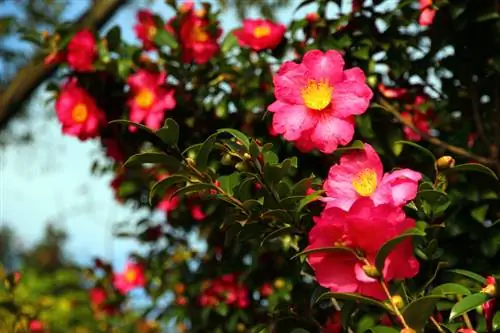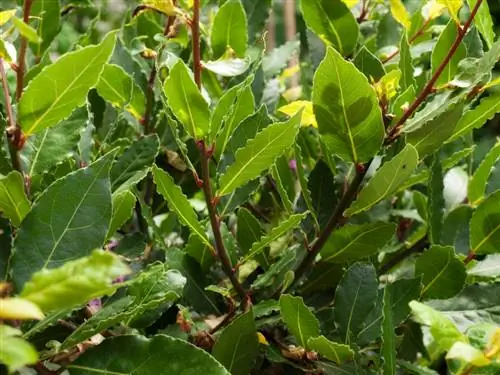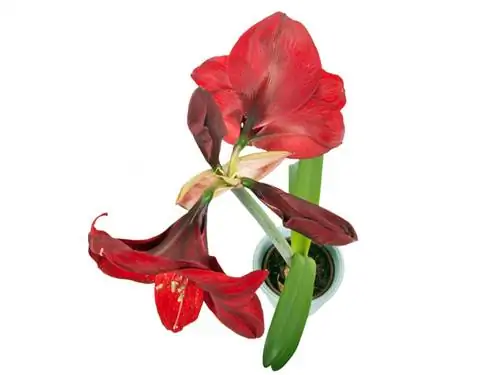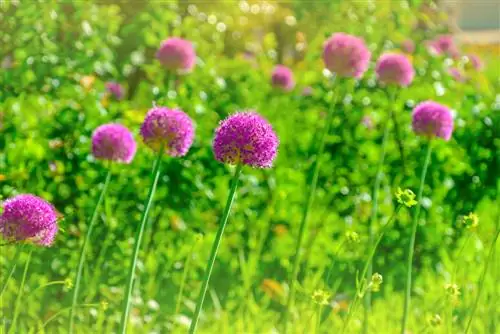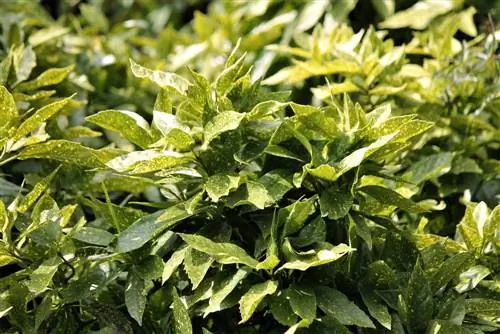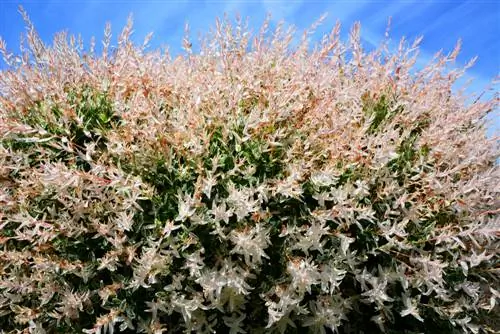- Author admin [email protected].
- Public 2023-12-16 16:46.
- Last modified 2025-01-23 11:20.
Among hobby gardeners, the camellia is considered a diva among potted plants because it often hardly blooms or loses leaves and flowers prematurely. With the right care and not too much heat, keeping Camellia japonica is not that complicated.

How do I properly care for a Camellia japonica?
Proper care for Camellia japonica includes regular watering with soft water, fertilization during the main growing season, sparing repotting and careful topiary. Watch out for diseases and pests and keep the plant cool in winter.
How do you water the Camellia japonica correctly?
The soil in the bucket must never dry out completely. During the flowering period, the plant needs more water than during the rest period.
Use soft water, such as rainwater. If you can only water with tap water, let the water sit for a few days and keep it at room temperature.
Does the camellia need to be fertilized?
In the pot, the Camellia japonica only needs fertilizer during the main growing season from March to July. Use a commercially available ericaceous bed fertilizer (€8.00 on Amazon) that is also suitable for azaleas.
Fertilize every two weeks according to instructions.
When do camellias need to be repotted?
Flowering camellias should not be repotted too often. A new pot every three years is sufficient. The best time is spring after flowering.
Can camellias be cut?
Cut he althy Camellia japonica regularly, but so carefully that the cut is hardly visible.
If necessary, you can cut back the camellia radically. However, you should not cut the remaining shoots too short.
What diseases and pests do you need to watch out for?
- Camellia Plague
- Scale insects
- Bigmouth Weevil
- Thrips
If the plant drops all of its leaves and flowers or rots, it is usually not a disease that is responsible, but rather incorrect care and an unfavorable location. Check whether the plant
- gets enough light
- there is no waterlogging
- not too warm and
- not too drafty
If you take remedial action, the Camellia japonica usually recovers quickly.
What does winter care look like?
Camellia japonica is not hardy. Although it can tolerate temperatures down to -5 degrees, it is best overwintered in a cool place in the house. Since camellias bloom in winter, hallways or entrance areas are favorable locations.
Tips & Tricks
Camellias don't do well at all with strong temperature changes. If a change of location is unavoidable, slowly acclimate the plant to warmer or cooler temperatures. Otherwise it will drop leaves and flowers.

